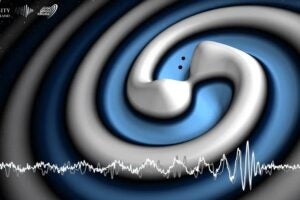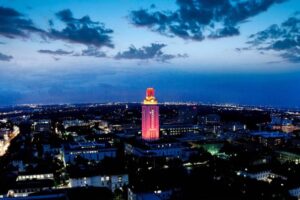AUSTIN, Texas–Six years ago, two astronomers predicted the existence of a new kind of star in the Universe æ a star with a tremendously strong magnetic field, hundreds of times stronger than generally thought attainable. Dr. Robert Duncan of The University of Texas at Austin and Dr. Christopher Thompson of the University of North Carolina at Chapell Hill predicted that such stars, which they called “magnetars,” can become so strongly magnetized that magnetism itself heats them and powers bursts of gamma rays.
Now X-ray detectors aboard a NASA satellite have found strong evidence that these stars exist. In fact, the new evidence suggests that our Galaxy may contain millions of these super-magnetic, ultra-dense stars, although only the youngest and brightest 10 or 12 of them have been detected so far.
In 1992, Duncan and Thompson outlined a theory of how “magnetars” form, and how they behave. Their calculations suggested that some mysterious bursting stars observed by astronomers, the so-called “soft gamma repeaters,”were actually a manifestation of the theoretical magnetars.
Soft gamma repeaters (SGRs) were first detected in the late 1970s. They emit very intense bursts of “soft,” or low-energy, gamma rays. SGRs are the brightest bursting objects in our Galaxy that survive their own outbursts to burst again. They can give off as much energy in a single second as the Sun does in an entire year. SGRs are found within the clouds of debris left over from exploding stars (supernovae). This has led astronomers to suspect that SGRs are some kind of neutron star, since neutron stars are known to form inside supernovae.
Neutron stars are quite familiar to astronomers; hundreds have been detected since they were discovered in 1968. They are rapidly spinning, dense balls of neutrons, like giant atomic nuclei, more massive than the Sun but only about 12 miles across. However, the familiar kind of neutron stars (called “pulsars”) have much weaker magnetic fields than those that were contemplated by Duncan and Thompson. The question of why some neutron stars become SGRs and emit bursts of gamma rays has been hotly debated.



